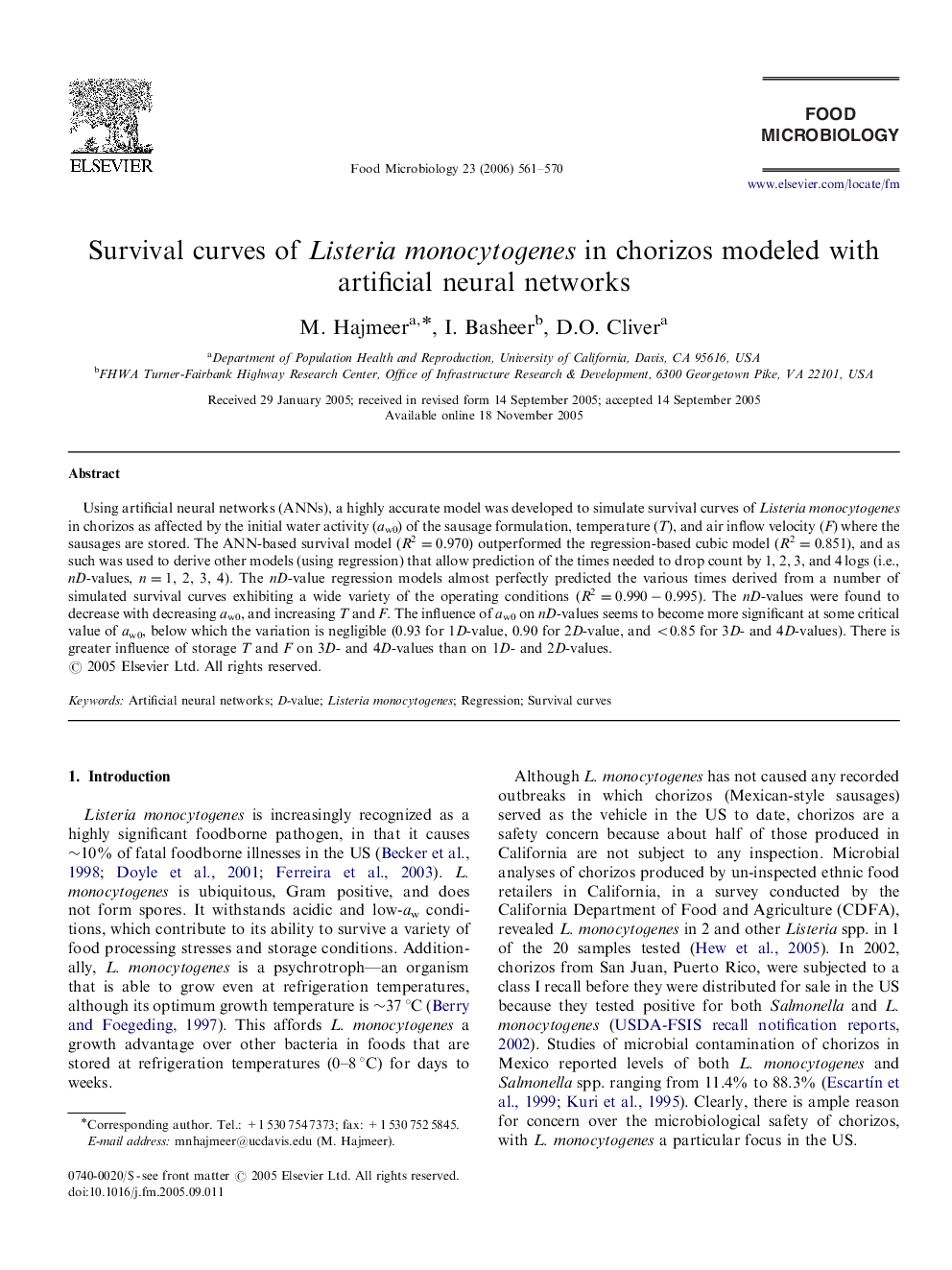| Article ID | Journal | Published Year | Pages | File Type |
|---|---|---|---|---|
| 4363931 | Food Microbiology | 2006 | 10 Pages |
Using artificial neural networks (ANNs), a highly accurate model was developed to simulate survival curves of Listeria monocytogenes in chorizos as affected by the initial water activity (aw0) of the sausage formulation, temperature (T), and air inflow velocity (F ) where the sausages are stored. The ANN-based survival model (R2=0.970)(R2=0.970) outperformed the regression-based cubic model (R2=0.851)(R2=0.851), and as such was used to derive other models (using regression) that allow prediction of the times needed to drop count by 1, 2, 3, and 4 logs (i.e., nD-values, n=1, 2, 3, 4). The nD -value regression models almost perfectly predicted the various times derived from a number of simulated survival curves exhibiting a wide variety of the operating conditions (R2=0.990-0.995)(R2=0.990-0.995). The nD-values were found to decrease with decreasing aw0, and increasing T and F. The influence of aw0 on nD-values seems to become more significant at some critical value of aw0, below which the variation is negligible (0.93 for 1D-value, 0.90 for 2D-value, and <0.85 for 3D- and 4D-values). There is greater influence of storage T and F on 3D- and 4D-values than on 1D- and 2D-values.
